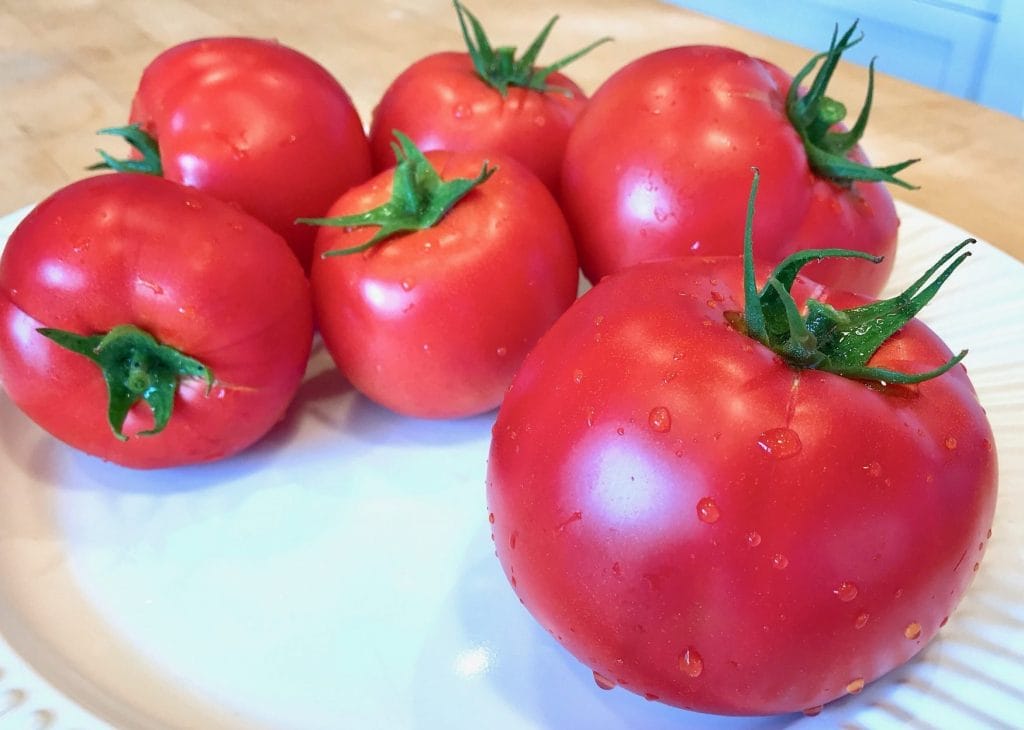
It is easier than you think to plant a vegetable garden. Anyone can do it! You don’t need acres of land or tons of time either. With food prices increasing at alarming rates, you could start your own garden to cut down on food costs. Plus, the food you grew tastes SO much better!

Before spending the time and effort to plant a huge vegetable garden, however, carefully consider what goes into selecting, planting, maintaining, and harvesting the produce. Parents often tell youngsters who put too much food on their plate that “Your eyes were bigger than your stomach.” Prospective gardeners would do well to keep this concept in mind when planning a garden.
6 Questions To Ask Yourself Before Starting A Vegetable Garden

1. What Is Your Goal In Planting A Vegetable Garden?
If the purpose of planting a garden is to save money, consideration should be given to planting vegetables that cost the most in the store. Examples are tomatoes, peppers, and summer squash.
If the purpose is to harvest food that is homegrown, with little or no chemicals, or that is completely organic, then planting your own vegetable garden gives you this assurance.
2. What Foods Do You And Your Family Like To Eat?
Be realistic about what you and your family will eat. Don’t plant brussels sprouts just because they are healthy to eat. If the produce is going to rot on the vine because no one wants to eat it, there is no sense in wasting time and energy preparing the soil and planting it. Only plant items you know for certain you and your family will eat or that you will have time to preserve.
3. What Are Your Eating Preferences?

Photo credit: Jon Baily, 2dadswithbaggage.com
Before planting a vegetable garden, determine how you will use the items you are planting. If you plant tomatoes, for example, ask yourself how you want to eat them. Do you like them in your salad? If so, cherry tomatoes are the type to plant. Do you only like tomatoes on a sandwich? Then a variety such as Beefsteak may be the way to go. If your goal is to make spaghetti sauce or ketchup, then a meatier variety such as Roma may be a better option.
4. How Much Time Can You Devote To A Vegetable Garden?
Depending on what you plant and how much, the time commitment needed for a garden can be tremendous, or it can be very little.
- Do you have time to plant seeds indoors in February or March, or would you be better served to buy seedlings and plant them directly into the garden in April or May?
- How much time do you have to prepare a garden plot? If you have limited time to prepare a full-size garden, consider planting only lettuce, spinach, or peppers, which can be grown in a container placed on a porch.
- Do you have time to do daily activities such as watering the garden or spraying for insects? If time is limited for these types of garden activities, consider planting vegetables that have a high yield from only a few plants.
- Do you need to plant a raised vegetable garden, a window sill garden or a full backyard plot? Start with what makes sense for your space and time. Check out the tips for creating a raised vegetable garden from 2dadswithbaggage.com.
5. What Is The Yield?
After deciding what vegetables you and your family will eat, how much space you have available, and how much time you have to devote to tending a garden, next consider the yield. Some items, such as tomatoes, have a medium yield compared to the square footage needed to grow them. Corn has a low yield. If garden space or time commitment is limited, you may be able to plant enough corn to enjoy a few ears at harvest time, but not enough to can or put in the freezer for the winter.
The yield should also be considered when determining how much of each vegetable to plant. For example, don’t plant six rows of green beans if there are only two family members.
6. When Is Harvest Time?

Many vegetables are ready for harvest in August and September, a time when families are on vacation and practice for fall sports activities is in full swing. If the goal is to have fresh tomatoes or cabbage on the dinner table during this time, there is no problem. But will you have the time to devote to canning spaghetti sauce or sauerkraut in between last-minute school shopping and making sure the children get to sports or band practice?
The answers to these questions will help determine the size and type of garden to plant and the amount and types of vegetables to plant. This, in turn, will allow gardeners to enjoy the fruits of their labor with much less stress.
Planting a vegetable garden is a worthwhile endeavor and with the proper preparation just about anyone can do it! What will you plant?

I am a home cook that does things my way. In my kitchen, I make breakfast, pack lunches, prepare snacks, and cook dinner. During the week, we eat real food that is homemade, organic, and local. On the weekends we do explore more of our local restaurants. I bake my own bread, juice fresh oranges every other day, and make my own kombucha and other weekly favorites.












